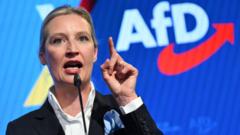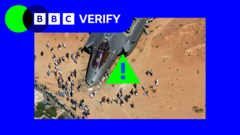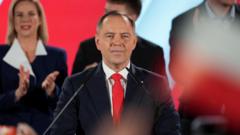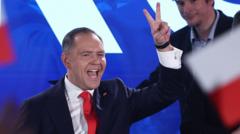In a pivotal election reflecting the changing political dynamics in Germany, five main takeaways emerge, highlighting the rise of the Alternative for Germany (AfD) and a significant voter turnout.
Shifting Sands: Key Insights from Germany's 2025 Election

Shifting Sands: Key Insights from Germany's 2025 Election
Germany's 2025 election showcases a political landscape marked by dramatic shifts and growing divisions among voters.
The recent German elections have revealed striking changes in the country's political climate, most notably the impressive rise of the Alternative for Germany (AfD), which has doubled its support over the past four years to secure 20.8% of the vote. This marks a significant shift as the party expands its influence beyond its traditional eastern base into western regions, as illustrated by stark contrasts on election maps reminiscent of Cold War divisions. The outgoing Chancellor Olaf Scholz's Social Democratic Party (SPD) recorded its worst performance in decades, garnering just 16.4% of the vote, suggesting a fracturing of traditional political loyalties.
The AfD's controversial platform includes the contentious policy of "remigration," which aims at deporting not only migrants who commit crimes but could also extend to their descendants. While the party has gained traction, it remains blocked from government participation due to a “firewall” implemented by mainstream parties to prevent collaboration with groups viewed as extremist. This label was reaffirmed by a recent court ruling classifying the AfD as a suspected far-right organization.
Voter engagement surged to its highest level in 40 years, with an impressive 82.5% turnout, reflecting the heightened interest and stakes in this electoral cycle. The fall of the ruling three-party coalition has resulted in the resignation of prominent leaders, including Olaf Scholz, while the resurgence of the Left party (Die Linke) signals a grassroots mobilization, particularly among younger voters, driven by effective social media strategies that have resonated with the public.
The election results underscore a generational divide as younger voters gravitate towards leftist and far-right platforms, while older demographics lean towards centrist parties. With Alice Weidel of the AfD and Heidi Reichinnek of Die Linke emerging as social media sensations, their campaigns illustrate the evolving landscape of political influence in modern Germany. As the country navigates these shifting allegiances, the political implications for the future remain profound.
The AfD's controversial platform includes the contentious policy of "remigration," which aims at deporting not only migrants who commit crimes but could also extend to their descendants. While the party has gained traction, it remains blocked from government participation due to a “firewall” implemented by mainstream parties to prevent collaboration with groups viewed as extremist. This label was reaffirmed by a recent court ruling classifying the AfD as a suspected far-right organization.
Voter engagement surged to its highest level in 40 years, with an impressive 82.5% turnout, reflecting the heightened interest and stakes in this electoral cycle. The fall of the ruling three-party coalition has resulted in the resignation of prominent leaders, including Olaf Scholz, while the resurgence of the Left party (Die Linke) signals a grassroots mobilization, particularly among younger voters, driven by effective social media strategies that have resonated with the public.
The election results underscore a generational divide as younger voters gravitate towards leftist and far-right platforms, while older demographics lean towards centrist parties. With Alice Weidel of the AfD and Heidi Reichinnek of Die Linke emerging as social media sensations, their campaigns illustrate the evolving landscape of political influence in modern Germany. As the country navigates these shifting allegiances, the political implications for the future remain profound.






















